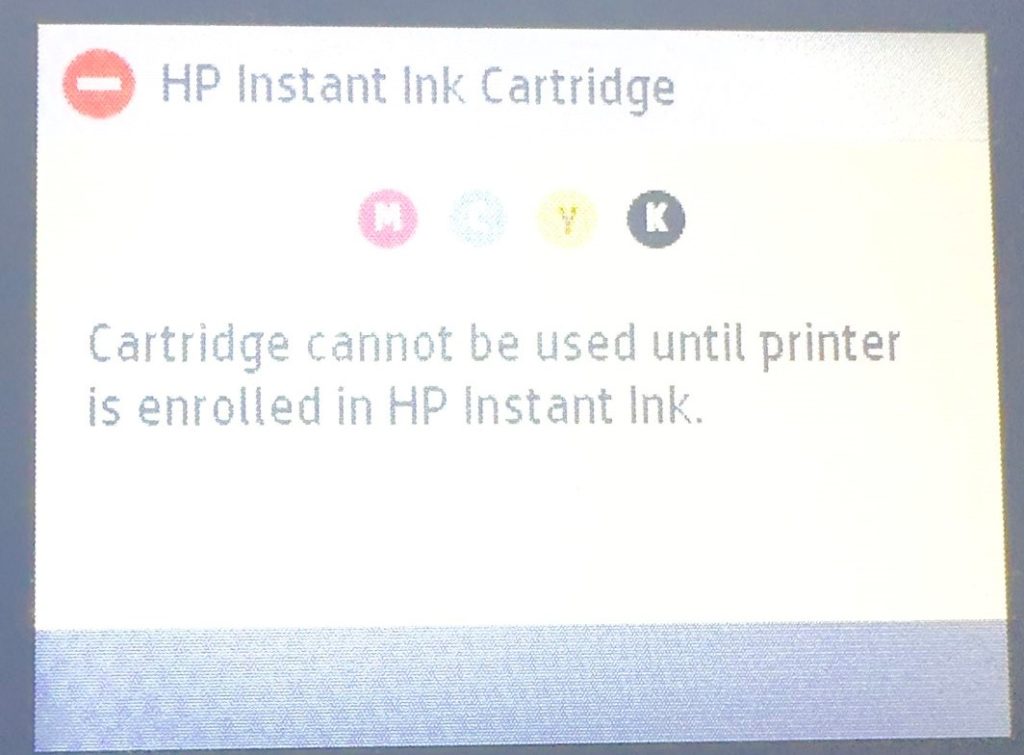Hewlett-Packard, more commonly known as HP, recently angered their customers by releasing a firmware update that prevented the use of non-HP ink cartridges on their printers.
This bold move has sparked a lot of outrage from customers, especially amongst those who use third-party ink cartridges to save on printing costs.
This blog post will take a closer look at the issue and try to understand why HP took such a drastic step.
Why has HP chosen to take this step?
Many customers of HP are very concerned and worried about the recent firmware update. The company will prevent the use of cheaper third-party ink cartridges, leaving users with no other option but to buy more HP’s more expensive ones.
Third-party ink cartridges are known to cost less than half of what HP charges for their ink cartridges, which are known to be very pricey.
According to HP, they took this step to lower the chances of malware attacks and safeguard their intellectual property. They have also stated that using cartridges from third-party manufacturers may lead to lower hardware performance, lower print quality, and reduced security.

What has the customer response been?
A high number of HP customers have loudly expressed their concerns and dissatisfaction on social media and other online platforms.
Customers have not only complained about the cost of the HP ink cartridges, but also the move to disable the use of third-party cartridges. The overall outcome and general view has been that people feel deeply cheated by HP’s latest actions and are accusing the company of being anti-consumer.
Moreover, the outrage from customers has not died down quickly. Some customers believe that disabling non-HP ink cartridges is a way for HP to monopolise the printer ink industry.
Hewlett-Packard has sparked complaints from customers by disabling printers if people use cheaper ink cartridges from rival companies https://t.co/NSnczw5BPH
— LBC (@LBC) May 12, 2023
How has HP responded to these claims?
In response, HP released a statement where they have chosen to clarify their position, and further justify their decision to block the use of non-HP ink cartridges.
According to the company, they took this action to safeguard their customers against security breaches and maintain the integrity of their printing systems.
Furthermore, HP feels that the above means that all of its customers can rest assured that their printers will remain in full working order, as they won’t malfunction or encounter any security risks when using HP branded inks.

What has been offered as a solution?
As a solution, HP offers and provides an ink subscription service to its customers. The service allows customers to print up to 100 pages for £4.49 a month, with varying prices for different page limits, such as 10-page limit for 99p and 700-page limit for £22.40 per month.
Though this could be a possible and agreeable solution for some customers, others might not want to subscribe to the service, as it is another monthly added expense for them to contend with.
Though it is also worth noting that currently, it’s unclear which printer models will be affected by this change in the future, as no information has been provided yet specifying which models are affected.
Is history continuing to repeat itself?
This is not the first time HP has outraged its customers by blocking the use of other ink cartridges.
The firm has been forced to pay out millions in compensation to customers in America, Australia and across Europe since it first introduced dynamic security measures back in 2016.
It remains to be seen whether customers in the UK will receive any such similar compensation or even if HP’s latest move will be met with any further legal action.

What could these changes mean for HP in the future?
Customers are becoming increasingly aware and vocal when it comes to their rights. If HP continues to take such steps, customers may decide to opt for other brands that offer cheaper printing options.
This could lead to a decrease in the number of loyal customers HP has had over the years, resulting in a drop in profits and sales. It is thus important for HP to consider the opinion of its customers and come to a consensus that is beneficial for all parties involved.
Conclusion
Although HP may have had good intentions, their actions of disabling non-HP ink cartridges seem like an unfair move towards their customers. Additionally,it’s understandable that customers are outraged about the upcoming higher costs of having to use only HP ink cartridges.
At this time, it remains uncertain if HP will do anything else to address their customers’ concerns or if they will stick to requiring only HP ink cartridges. For now, it seems that customers will need to assess the pros and cons of utilising HP ink and make their own decision on what to do next.









